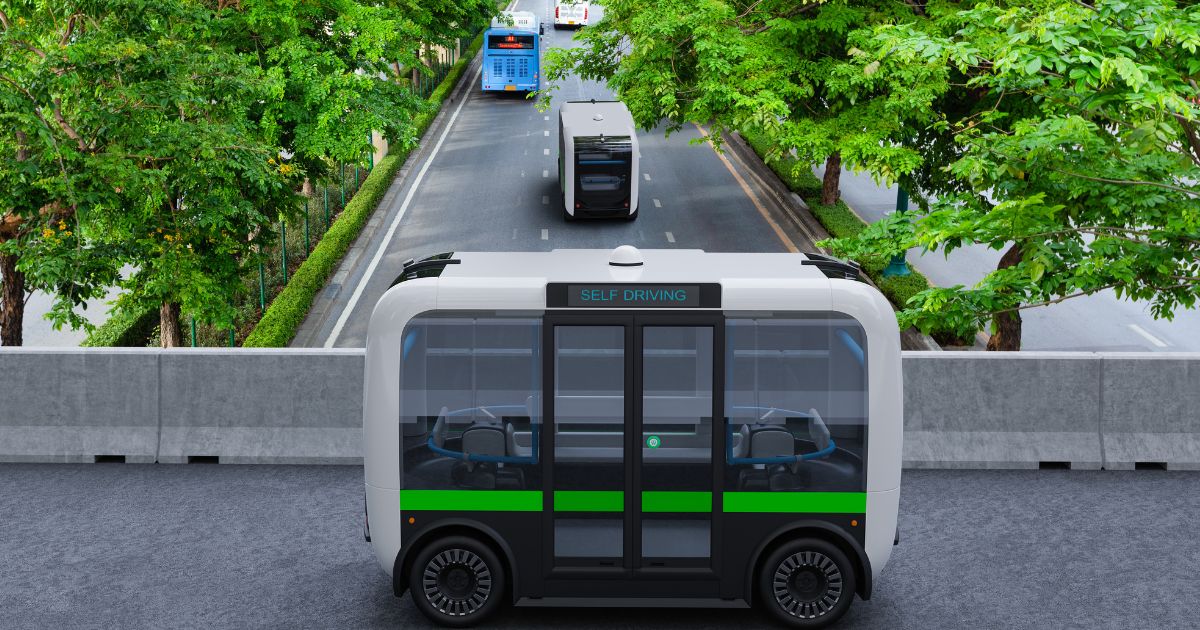
It took only nine years from when the Wright brothers lifted off from Kitty Hawk for airplanes to have the first piece of automation technology installed on them. The gyroscopic automatic pilot, invented in 1912 by Lawrence Sperry, automatically balanced planes in flight, so that pilots didn’t have to.
Of course, aviation automation makes sense when you consider there’s a lot less traffic to content with up in the sky. On the ground, we have masses of vehicles (almost 300 million in the US) – and that’s not counting the cyclists and pedestrians who also use our roads.
While making the transformation to autonomous vehicles is going to be a long term one, that hasn’t stopped many businesses and transportation agencies from embarking on autonomous pilot programs. Many of these have been supported by grants from the federal government; for example, the $60 million in grant funding awarded to eight organizations in 2019 to gather safety data.
Throw a dart at a map of the US and it will probably land close to an autonomous pilot, some (but not all) of which are autonomous bus pilots:
- Peachtree Corners, Georgia has created a three-mile-long autonomous testing lab
- Orlando, Florida will launch two autonomous bus pilots this summer
- Alphabet subsidiary Waymo will soon be testing a new generation of autonomous vehicles in Austin, Texas
- Sun City, Arizona will be running an autonomous shuttle service for seniors
- New York City’s Port Authority is testing driverless shuttle service at John F. Kennedy Airport
- Minnesota’s goMARTI is conducting a pilot of five vehicles in the greater Grand Rapids area
- The University of Hawaiʻi at Mānoa will soon be testing an autonomous minibus on its campus
Reasons for Self-Driving Buses
It may make sense to roll out autonomous cars when you look at the body count from accidents. In 2019, FMCSA estimates there were about 13,000 rider injuries from bus crashes. But that number pales by comparison with the 14.2 million injury-related vehicle crashes for the same year. Buses get into accidents – the news has reported several terrible ones in the past few weeks. But clearly it’s still safer to be a bus rider than any other on American roads.
Not surprising, considering that bus drivers are trained, drug tested and held to a code of conduct.
Are self-driving buses the best place to focus efforts right now? They seem to be more about our collective romance with technology than solving the transportation problems our country faces. It’s not a question of “can it be done?” but “is it worth doing?”
For instance, surveys have found that most riders are not comfortable with completely autonomous vehicles. Right now these vehicles have a safety steward, an employee on board who can intervene if they encounter problems. Are there any savings if the bus is staffed by a safety steward? Will the staff in this role have the same level of training that drivers currently have?
Maintenance is another issue. Dirt on the sensors required to run the bus can stop it mid-ride. Technology is currently in development to wash sensors when they detect grime, but it is easy to see how this could become a liability in areas with frequent snow and ice conditions.
Automating buses also requires other technologies besides sensors, including on-board computers, external IoT (Internet of Things) sensors, and the edge computing infrastructure needed to deliver data to and from devices. Will the cost of acquiring and maintaining this technology be cheaper than staffing buses?
Finally, even if autonomous technology can control the bus, who will make sure passengers are courteous, and who will answer their service questions?
Proponents of self-driving vehicles maintain that they will deliver a host of benefits: reduce crashes, emissions, and congestion; save on costs; and provide independence for the disabled and elderly. But while there are many situations where buses could be deployed autonomously, trying to use them to meet our most common transit needs seems like a solution to the wrong problem.